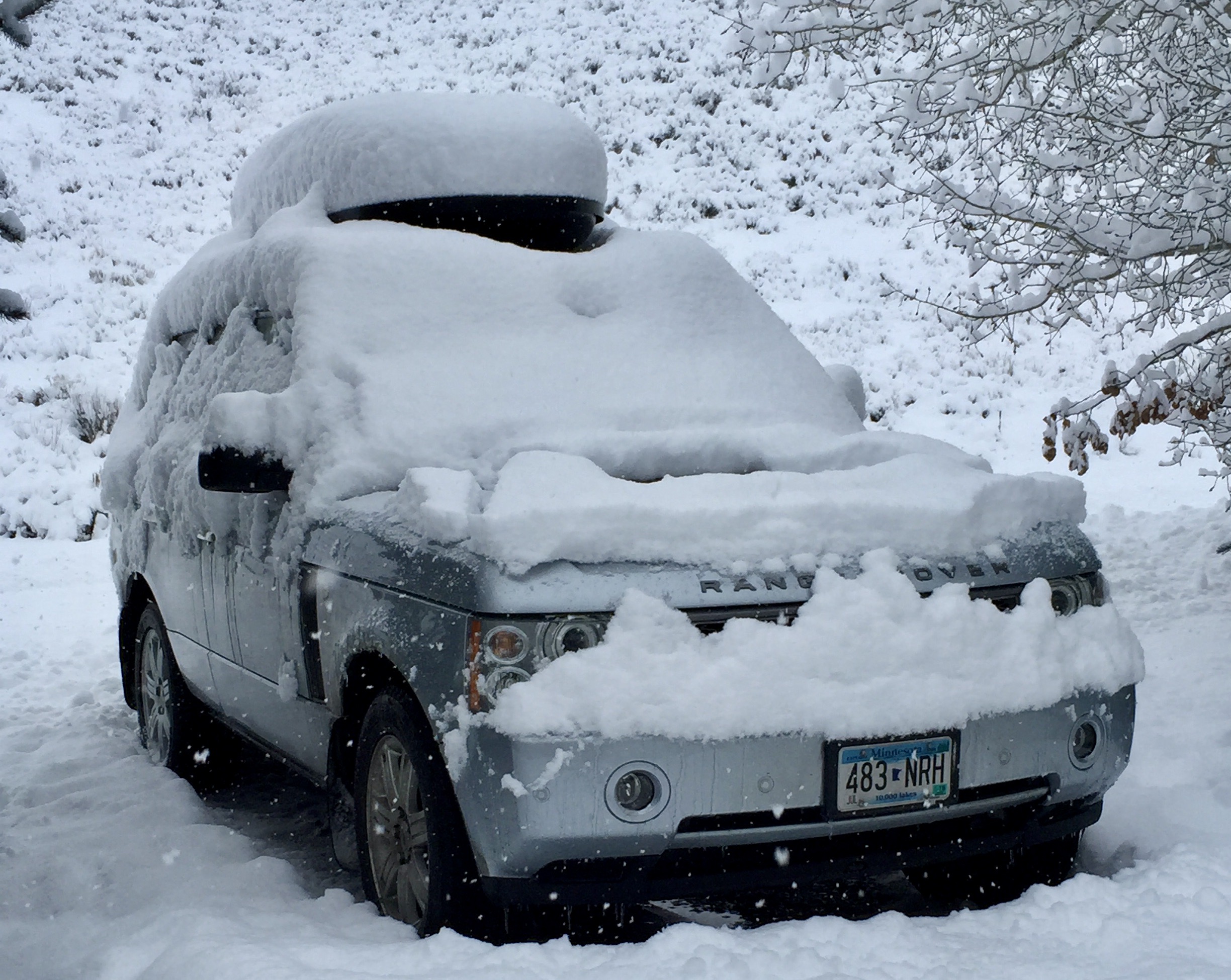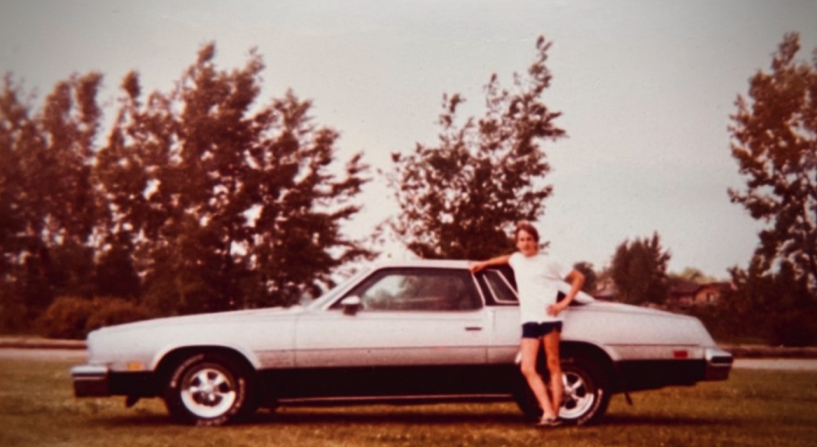Winter Driving is Easier with Basic Preparation
Stay safe, and out of the shop, while minimizing costs.

It's that time of year again; winter is coming. Here are the best ways to keep you safe and your car running while minimizing the impact on your pocketbook.
PRIORITY #1 – AVOID THE ACCIDENTS
The best way to wreck your day, lighten your wallet, and risk your safety is to have a fenderbender. So, focus on avoiding this first and foremost.
Use winter tires, which will shorten the stopping distance of a vehicle by 20 to 50%, depending on the conditions; this is a massive distance when avoiding vehicles and objects ahead of you. These specialized tires work better for three primary reasons. First, they use a softer rubber compound, which keeps them more pliable and grippy in the coldest conditions. Second, they incorporate a tread design that targets snow and ice conditions. Third, they generally have deeper tread patterns for increased grip in packed snow. The downside is that you cannot drive them in the summer as they will wear out rapidly. Having a second set of winter rims and tires to swap out each season is easiest, but yes, there is a hassle factor, and you will need a place to store your off-season tires. Cost is always a consideration, but over time, having a set of dedicated winter tires is no more expensive than a single set of all-season tires; you will have two sets of tires, but each is going half the distance, so your cost/mile doesn't change. If you are trying to minimize your costs, there are often good values on Facebook Marketplace, Craigslist, etc, as people often sell their vehicles and no longer need winter tires that do not fit on their new vehicle. Winter driving wears tires slowly, so finding a good set of these used specialized tires is possible.
Check your tire pressures. When the air in your tire cools, it reduces the pressure. Every 10° drop will decrease your tire pressure by roughly 1 psi. While that may sound small, going from an 80° summer to a typical winter, you can lose as much as 10 psi, making your tires significantly underinflated. There is a misleading rumor that nitrogen will minimize this pressure loss, but this is simply not true. All gaseous state matter follows the ideal gas law of PV=nRT; while avoiding the discussion of Avogadro's number and moles, this gas law proves that pressure is directly related to temperature and independent of the gaseous material in the container (or tire). Remembering that ordinary air is 78% nitrogen gives you further banter points when your local shop tries to upsell you into the more expensive nitrogen tire fills.
Prepare for good visibility. It’s a perfect time of year to replace your windshield wipers and fill up your washer fluid. Confirm your window ice scraper is in the vehicle (although we have all tried using a credit card in a pinch). Finally, double-check there are no broken headlights or tail lights. Seeing your surroundings is paramount for quick decision-making in emergencies.
Buy extra water softener salt. This rule only applies if you have a RWD (rear-wheel-drive) vehicle. Most snow-belt northerners reading this article already drive a 4WD (four-wheel-drive), AWD (all-wheel-drive), or FWD (front-wheel-drive). However, if you have a RWD vehicle and use proper snow tires, it can perform remarkably well in the winter non-mountainous regions. Just add 100-200 pounds of salt in your trunk as far rearward in the vehicle as possible; this will significantly alter the weight bias and make your vehicle perform as well as many front-wheel drive vehicles in slippery conditions. Many people become brainwashed that 4WD or AWD will make your car perform substantially better under all conditions; that's just not true, as it will not enable you to stop faster, nor will it greatly impact your turning ability. Proper snow tires, ABS, and stability control are still your best value.
PRIORITY #2 –AVOID UNPLANNED SHOP APPOINTMENTS
I spoke to Eric Dutcher, a 30+ year mechanic and owner of D&D Auto Works in St Louis Park, Minnesota, and asked what the most common problems that bring cars into the shop when the temperature drops: "It's always the same: batteries, plugs, and tires are!"
Have a strong battery - when the temperature drops, your local mechanic's garage bays fill up quickly, typically because vehicles will not start. If your battery weakens with age or becomes corroded at the terminals, it will exhibit this frailty most in cold weather. Have you ever noticed the battery on your phone seems to die faster if it's cold? Your car is no different. Batteries typically last 3 to 7 years, depending on many conditions. You can bring your car to a shop, which often gives you a free battery health test. Or, you can purchase an inexpensive backup battery jump starter and keep it in your vehicle. These batteries work just like jumper cables but without needing a donor car. As a bonus, they can also recharge your phone multiple times in an emergency. Suppose you are unsure about your battery's health and want to amortize its value further into its useful life. In that case, this backup battery gives you an excellent low-cost backup plan, and it will typically last for the life of your vehicle. Here is a good one that won't break the bank: link
Use spark plugs that are within their replacement cycle. Many years ago, spark plugs would last 10-20k miles and were easy to access, so we all became conditioned to "tuning-up our car" and replacing the plugs every year or two. With modern engines, the spark plugs are often more challenging to access, so manufacturers install long-life plugs with more expensive iridium and platinum tips that can last up to 100,000 miles. This can mean that your first real "tune-up" doesn't happen until you hit 100k miles, which may be well beyond how long you own the vehicle. Most of us forget that spark plugs still need to be replaced. However, the engine may not start when winter comes, and your overdue spark plugs have weakened. Remember, at engine startup, the air and fuel are freezing in the combustion chamber, and it needs a higher energy spark to initiate the explosion. If your spark plugs are old or your battery is weakening, it may not have enough spark energy to initiate ignition. When that happens, you're stuck calling a tow truck when it's 20 below, only to find out the shop can't get to your car for five days because of everyone else ahead of you who also have weak batteries and spark plugs.
Use synthetic engine oil. Synthetic oil is becoming the norm, and most owners already use it. One of the benefits of synthetic oils is it has much lower viscosity when it's bitter cold. Simply put, it's easier for the starter to turn over your engine as there is less resistance. Synthetic oils can last 10,000 miles or longer, meaning your oil change can become an annual event. There are no lousy synthetic oils left on the market. We encourage you to use synthetic over conventional oil whenever possible, especially in colder climates.
Save your money, and don't purchase a block heater. Unless you are storing your vehicle outside in conditions below -30°F, you will unlikely need a block heater if you follow the guidance above with proper battery, plugs, and oil.
While it is always helpful to check your coolant quality (both in summer and in winter), this is not a problem that frequently sends cars to the shop.
GROUP #3 – PAY IT FORWARD
The fact that you were taking the time to read this article means you are far less likely to find yourself stranded in a ditch. Before the days of universal cell phone coverage, access to real-time weather, instant communications to emergency services, and ubiquitous GPS locationing, the risk of becoming stranded in a storm was significantly higher. Back then, we needed to take precautions, especially in rural areas. But in today's digital age, the probability of becoming stranded in a snowstorm without communication or support is unlikely. Nevertheless, the last point is:
Be a nice person and carry a basic towing strap. If you follow the rules above and drive a heavier 4WD or AWD truck or SUV, pay it forward and be a savior for somebody stuck and in need. When the first snow arrives, the stranded vehicles are typically smaller, with younger drivers and poor tires. Save them a few hundred dollars and give them a tug out (obviously, be safe and work within your skill sets). Five minutes with your winter-ready vehicle will correct a young driver's misfortune, and you will feel like the hero all day. Here's a basic tow kit that is economical and will last a lifetime: link
KEYWORDS:
RELATED ARTICLES
Join the conversation, and share more learnings
Login to join the conversation



Great article